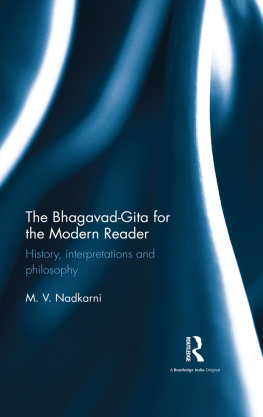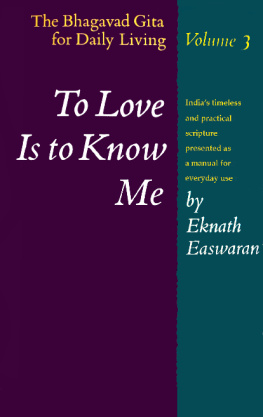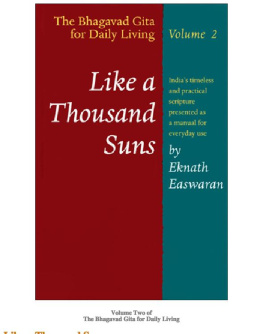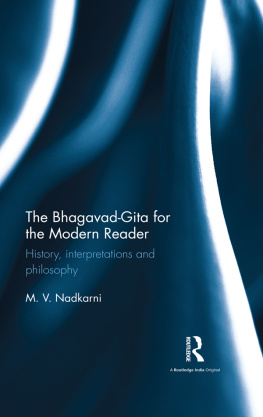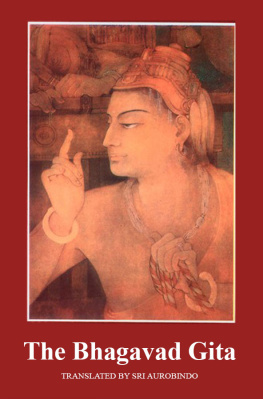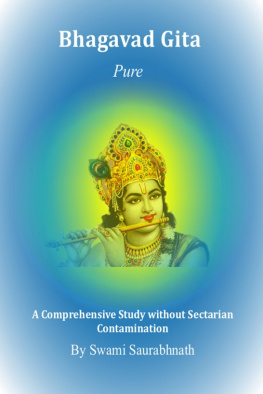EXPLORING THE BHAGAVAD GT
This is potentially one of the most significant books to emerge in recent times on how to read the Gt, for it provides a clear way forward to make coherent sense of one of the most important yet methodologically intractable texts of religious Hinduism. I found this book an illumining experience.
Julius Lipner FBA, Professor of Hinduism and the Comparative Study of
Religion and Fellow of Clare Hall, University of Cambridge, UK
A fascinating book which throws new light on the Gt, and should help to make it more accessible to those who wish to read this great spiritual classic.
Keith Ward FBA, Regius Professor of Divinity Emeritus and Fellow of Christ
Church College, University of Oxford, UK
Ithamar Theodor approaches the ancient Bhavadad Gt with a modern mind and finds much in it that deserves our attention. Locating his study within Comparative Theology and identifying the various layers of meaning in the text will help those unacquainted with it to find their way through this complex classic. Combining the philosophical-theoretical with the ethical-practical the author shows the universal relevance of the Gt s teaching. Since Sarvepalli Radhakrishnan nobody has offered as penetrating a study of this classic as Ithamar Theodor has done.
Klaus Klostermaier FRSC, Distinguished Professor of Hinduism and Religious
Studies Emeritus, University of Manitoba, Canada
For my beloved daughters;
Inbal Jhnav, Nili Nla Mdhava dev and Kamah Kamalin
Exploring the Bhagavad Gt
Philosophy, Structure and Meaning
ITHAMAR THEODOR
University of Haifa, Israel

First published 2010 by Ashgate Publishing
Published 2016 by Routledge
2 Park Square, Milton Park, Abingdon, Oxon OX14 4RN
711 Third Avenue, New York, NY 10017, USA
Routledge is an imprint of the Taylor & Francis Group, an informa business
Copyright Ithamar Theodor 2010
Ithamar Theodor has asserted his right under the Copyright, Designs and Patents Act, 1988, to be identified as the author of this work.
All rights reserved. No part of this book may be reprinted or reproduced or utilised in any form or by any electronic, mechanical, or other means, now known or hereafter invented, including photocopying and recording, or in any information storage or retrieval system, without permission in writing from the publishers.
Notice:
Product or corporate names may be trademarks or registered trademarks, and are used only for identification and explanation without intent to infringe.
British Library Cataloguing in Publication Data
Theodor, Ithamar, 1959
Exploring the Bhagavad gita: philosophy, structure and meaning.
1. Bhagavadgita Criticism, interpretation, etc.
I. Title
294.5924046dc22
Library of Congress Cataloging-in-Publication Data
Theodor, Ithamar, 1959
Exploring the Bhagavad Gita: philosophy, structure, and meaning / Ithamar Theodor.
p. cm.
Includes bibliographical references and index.
ISBN 978-0-7546-6658-5 (hardcover: alk. paper) ISBN 978-1-4094-0260-2 (ebook)
1. Bhagavadgita Criticism, interpretation, etc. I. Title.
BL1138.66.T48 2009
294.5924046--dc22
2009040967
ISBN: 978-0-754-66658-5 (hbk)
ISBN: 978-1-315-58171-2 (ebk)
Contents
Pronunciation Guide
For readers unfamiliar with the subtleties of the Sanskrit alphabet and the commonly accepted transliteration system, a very brief guide is offered, roughly exemplifying the pronunciation of the main transliterated characters:
,,: gt | geetaa |
: stra | sootra |
ai,: vaiya | vayshya |
au,: Draupad | Drowpadee |
, , ,: aga | ashtaanga |
,: pava | paandava |
, ,: Ka | Krishna |
c,: Cekitna | Chekitaana |
j: jna | gyaana |
: Kara | Karna |
: Avins | Ashvins |
: ahakra | ahankaara (the may be in most cases translated into n but before p, ph, b and bh into m) |
Preface
There are various possible ways of reading the Bhagavad Gt; it can be read as a work of literature or poetry, it can be read as a work in the realm of Indology and examined from the point of view of Oriental studies, and it can otherwise be read as a work of philosophy or theology. As a work of literature or poetry, its literary and poetical aspects would naturally be highlighted; as such, the verses meters, the particular epithets of Arjuna and Ka and the corresponding emotions evoked by their application these and similar aspects will possibly be looked into. As a work of Indology, its historical and linguistic aspects would be highlighted and, as such, questions regarding the date of its compilation, the singularity or plurality of authors, the linguistic structure of the text, and its relation to the context of the Mahbhrata would be naturally considered. As a work of philosophy or theology, its conceptual structure, its underlying assumptions and its prevailing ideas would be mainly considered and examined, and this is the thrust of the present edition. Bhagavad Gt scholarship has become somewhat complicated and sophisticated, so much so that, at times, a gap has appeared, distancing the general readership from the scholarly analysis of this widely read text. The present work is perhaps driven by a pedagogical impulse and, as such, has not only a different mood than the analytical approach, but different aims; as far as the mood, I invite the readers to relax, to enter into a somewhat contemplative mood as befitting the reading of a great classical treatise. As far as the aims, I hope to further the reading of the Bhagavad Gt as a work in the realm of philosophy or theology, and to help the reader gain a vision or a darana of this great treatise. For this reason I am consciously avoiding a comprehensive bibliography and dense footnotes, as these may distract the reader from the simple but deep ideas originally conveyed.
The present work was born as a work of theology, and was sharpened and further articulated in the milieu of the Theology Faculty, University of Oxford. One of its main aims is to offer a unifying structure, open to a rational examination, a structure which will tie the text together. This structure is constructed applying the metaphor of a three-storey house and it is mainly composed of two components; on the one hand, there are three different storeys or floors, and on the other hand, a staircase leading the houses residents from the first floor towards the second and third floors. The three floors represent three levels of reality, whereas the staircase represents a transformational ladder of ethical and spiritual refinement. In the wider sense, I would like this work to be considered a contribution not only to the study of the Bhagavad Gt, but to the emerging field of Comparative Theology, as once the structures of great theological works could be articulated, these could be compared, contrasted and grouped together, thereby offering a unified sense of pluralistic spirituality which may serve as an alternative to materialism. Originally, Greek philosophy was inseparable from Greek religion, and only gradually was it articulated as a universal philosophy. Similarly, this work may further a slight step in this direction, in that it emphasizes the
Next page


